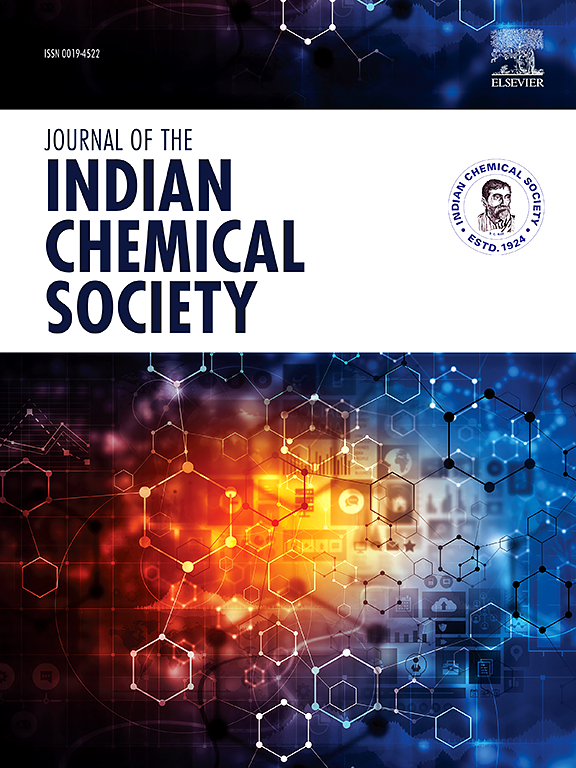可见光辅助SnO微片降解亚甲基蓝和甲基橙:机理和降解途径
IF 3.2
4区 化学
Q2 CHEMISTRY, MULTIDISCIPLINARY
引用次数: 0
摘要
采用水热法在可见光照射下合成了不同形貌的氧化亚锡(SnO),用于光催化降解。考察了SnO样品对亚甲基蓝(MB)和甲基橙(MO)染料的降解活性。采用x射线衍射(XRD)、场发射扫描电镜(FESEM)、紫外可见光谱(UV-visible spectroscopy)和布鲁诺尔-埃米特-泰勒(BET)技术对制备的SnO样品进行了表征。紫外可见光谱法监测了水溶液中染料的比例。合成的SnO样品D在可见光照射120 min后,对MO和MB染料的降解效率分别为79%和96%。BET分析进一步证实样品D为中孔材料,比表面积为55.354 m2/g,平均孔径为12.546 nm。在拟一阶条件下分析了MO和MB染料对SnO样品的催化活性。最有效的催化剂D样品在重复使用分析中表现出良好的性能,在重复使用SnO样品D用于MO和MB染料的第5个分析循环中,活性分别达到66%和85%。本文章由计算机程序翻译,如有差异,请以英文原文为准。

Visible-light assisted methylene blue and methyl orange degradation using SnO micro sheets: Mechanistic insight and degradation pathways
The hydrothermal method is used to synthesize the various morphologies of stannous oxide (SnO) for photocatalytic degradation under visible light irradiation. The catalytic activities of SnO samples were investigated for the degradation of the methylene blue (MB), and methyl orange (MO) dyes. The prepared SnO samples were characterized by the X-ray diffraction (XRD) technique, field emission scanning electron microscopy (FESEM), UV–visible spectroscopy, and Brunauer-Emmett-Teller (BET) technique. The UV–visible spectroscopy monitored the proportion of the dyes in an aqueous solution. The synthesized SnO sample D exhibit excellent activity with degradation efficiencies of >79 % and >96 %, respectively for MO and MB dyes, up to 120 min of irradiation to a visible light source. BET analysis further confirmed that sample D is a mesoporous material with a 55.354 m2/g specific surface area and an average pore diameter of 12.546 nm. The catalytic activity of MO and MB dyes with SnO samples was analyzed under pseudo-first-order conditions. The most effective catalyst, sample D, exhibited good performance during the reusability analysis, reaching an activity of 66 % and 85 % up to the fifth analyzed cycle of reuse SnO sample D for MO and MB dyes.
求助全文
通过发布文献求助,成功后即可免费获取论文全文。
去求助
来源期刊
CiteScore
3.50
自引率
7.70%
发文量
492
审稿时长
3-8 weeks
期刊介绍:
The Journal of the Indian Chemical Society publishes original, fundamental, theorical, experimental research work of highest quality in all areas of chemistry, biochemistry, medicinal chemistry, electrochemistry, agrochemistry, chemical engineering and technology, food chemistry, environmental chemistry, etc.

 求助内容:
求助内容: 应助结果提醒方式:
应助结果提醒方式:


